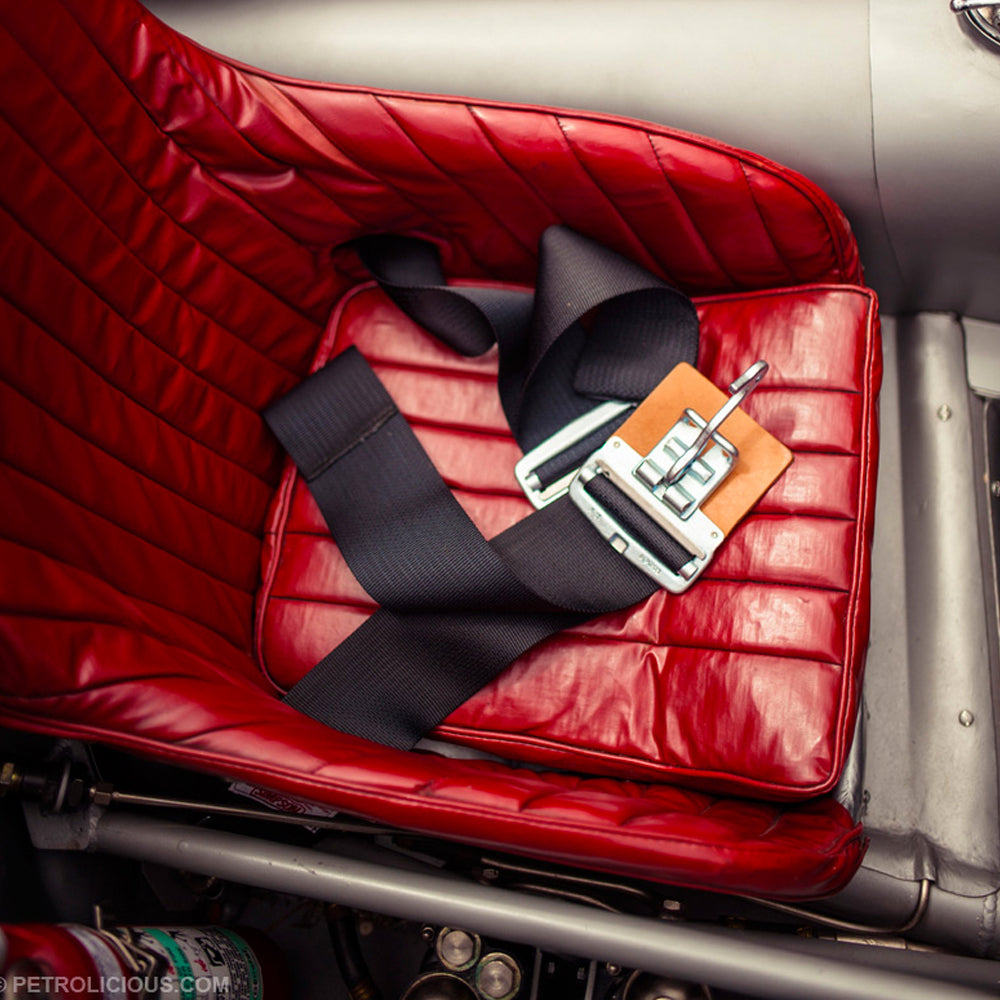Photography by Otis Blank, Josh Clason, and Andrew Schneider for Petrolicious
It’s important to keep car safety in perspective. I remember when seat belts weren’t standard in the back seats of cars and airbags were an optional extra. Fuel still had lead added and impact safety was measured by hood length in yards. I also remember my Grandpa’s ‘95 Volvo 850 that had a S.I.P.S. sticker in the back window (Side Impact Protection System) and as a kid thinking, "I suppose you could get hit from the side, what a good idea."
I also remember some people I knew at college losing their lives in car accidents, to which I now reckon that had they been driving a modern car they’d probably have survived.
The fact is that cars nowadays are built safety up. Safety first is something taken literally by all volume manufacturers, and one could easily argue that is why the cars of today feel so sedated by comparison.


I drive older cars, so I suppose I take my chances every time I go out for a drive. However, I also acknowledge that driving skill is a car’s ultimate safety feature and an awareness of what to do in adverse conditions. I also always carry a first aid kit and have a fire extinguisher mounted under my seat; safety doesn't always mean going head on with another car. I also always make sure that my tyre pressures are good, at least once a week. I guess you could say that’s excessive, but I like to know I’m being as diligent as I can, and perhaps we’d all benefit from a bit more personal responsibility.
With older cars you are more in control, my VW Golf Mk2 has no power assist steering and very little in the way of electronics, so you could argue that there’s a much lower risk of any electrical failure, which is always a potential culprit for danger.
Also the visibility in older cars is always significantly better with much thinner A- and B-pillars; it’s amazing how obstructive they typically are on more modern cars, due to their necessary thickness for impact integrity. I also think you have to take into consideration that older cars are significantly lighter, which undeniably means less mass, meaning less force in event of an impact. Anyhow, driving is singlehandedly the most dangerous thing most of us do on a daily basis, and considering all the variables, it’s a small wonder there aren't more accidents.
Just this month, Toyota was fined $1.2 Billion for concealing safety defects, and while this is doubtlessly a crime, it’s important to acknowledge that they have also led the world in pioneering many safety advances.
Perhaps I’m alone on this, but I find a level of comfort when a car company initiates a recall. It’s an admission that they got it wrong and are willing put it right, something we all know that no car company wants to do. When you consider the tens of thousands of individual components in a car, probability strongly suggests that at least a few parts will be prone to failure, through oversight of design or inconsistency in material, regardless of manufacturer.


In the cult movie Fight Club, the lead character narrating, played by Edward Norton, famously explains his job to a woman seated next to him on a plane:
Narrator: A new car built by my company leaves somewhere traveling at 60 mph. The rear differential locks up. The car crashes and burns with everyone trapped inside. Now, should we initiate a recall? Take the number of vehicles in the field, A, multiply by the probable rate of failure, B, multiply by the average out-of-court settlement, C. A times B times C equals X. If X is less than the cost of a recall, we don't do one.
Lady on plane: Are there a lot of these kinds of accidents?
Narrator: You wouldn't believe.
Lady on plane: Which car company do you work for?
Narrator: A major one.
It’s that ambiguous last line that steals the scene and makes you wonder, but not only that, sigh in the knowledge that, when a problem is reported, a formula much like this doubtlessly exists.
Modern distractions are however a relatively new phenomenon that has created a spike in driver-at-fault incidents, seen all over the world. We’ve all seen someone driving erratically and thought to ourselves, "I bet they're on their phone," only to overtake them midway through conversation whilst also eating a sandwich. Not only that, pedestrians engrossed in their smart phones now seem to have lost the age-old art in crossing a road properly.
In reflection of all this, the way for better safety on the road is never going to be a single route approach, it takes a level of personal responsibility, corporate responsibility, good highway management, driver training and a level of all round good common sense, employed by all.






















































